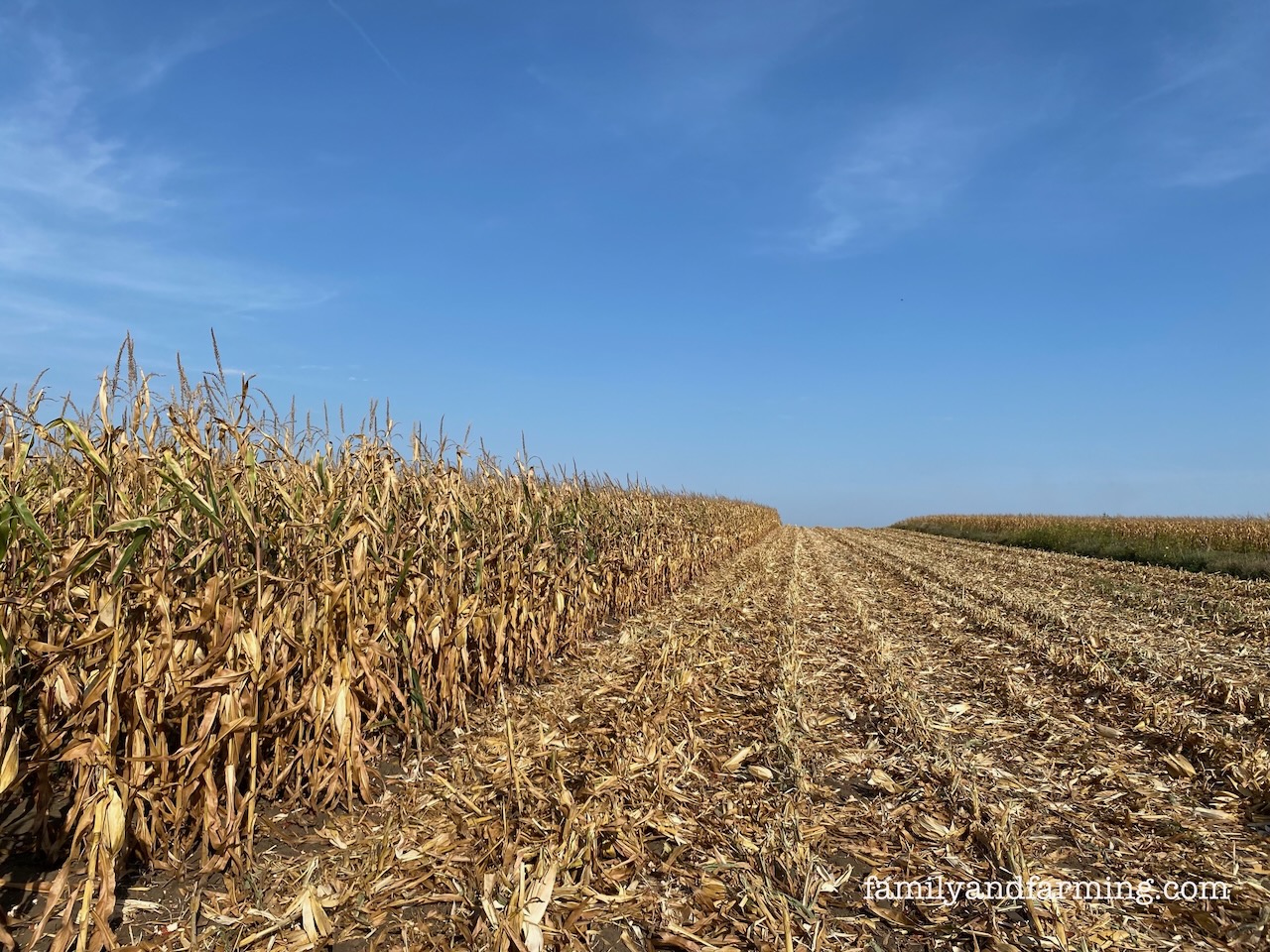We started combining corn early. Drought has affected both our corn and beans. Wherever the soil is less than deep black dirt, plants are stunted and show stress because of lack of moisture. We are thankful that we practice crop rotation, where our corn is planted on last year’s bean ground. With extreme drought crop conditions crop rotation is one of several ways to raise a better crop.
Seed Choices in Drought Conditions
Another way we increased our chances of a higher yield was to plant a variety of seed. We chose to plant mostly 99-104-day early corn. Later varieties range from 105-117 days. A longer growing maturity doesn’t necessarily mean the yield will be better. Each variety has different qualities, such as stalk strength, stress resistance, drought tolerance, and disease resistance that vary with each seed choice. There are so many variables to consider, and these considerations have to be made months before any seed is placed in the dirt, as we gamble this year’s income on the huge variable of weather that we certainly have no control over.

We don’t have a crystal ball, but we do have weather forecasts from NASA and other services to try to make the best choices before the crop is put in. There was mention of an El Nino, but weather is always a constantly changing variable. Seed choices were made well before the growing season started and well before we then moved into deep drought conditions. We were very hopeful that we would have a normal growing season this year. It didn’t turn out that way.

These 99-104 day varieties were a better choice for the circumstances we are now dealing with. We had gotten some early rain, before the drought, which helped the crop get a fast start. With later drought conditions, the stalks are now brittle because the energy of the plant was used to produce an ear, rather than supporting the stalk. If there is a wind storm the plants will fall and tangle into a mess that makes combining a disaster. We have to get the most distressed corn out before bad weather strikes. And because the air temperature is in the 70’s and 80’s, our bin dryers require little fuel, just forced air over the grain to bring it to a proper 15% moisture rate.
Drought Impacts Yield
Drought also has had an impact on yield. Areas of fields with lighter soil has the most stressed corn, with at least a 50% reduction of yield. Areas of dark black soil have a near-normal bushel rate. Our farm has great dirt, but no one field is entirely perfect, and yields will be reduced around 10-15% due to drought. Final numbers will be tallied when all of the crop is in.

I met a man who had spent his childhood on a farm in Mexico. We were talking about growing crops and he asked if we irrigated. I said we only work with rain that falls from the sky. He was incredulous that farmers in the Midwest don’t irrigate. I told him repeatedly that we depended only on rain for moisture for all our crops.
I don’t know enough about irrigating crops to have an opinion, but I recently read an article in Popular Mechanics that NASA has reported that the earth has tilted over thirty-one inches due to the pumping of ground water. Crazy stuff!
What is the biggest irrigated crop in the United States? Suburban lawns. Grass takes up over 40 million acres in the US, and a typical golf course uses 100,000-1 million gallons of water a week during hot weather. Let that sink in.
Smaller Can Be Better!
As I’ve stated with every blog post, we are small four-row farmers. In this situation, being a four-row farmer allows us to be nimble. Our four-row combine can sneak in and out of fields, picking the most stressed areas, and then moving to the next highly stressed area.

After about five days of skipping around various fields, we’ve combined the most stressed corn. As we are bringing in the last load, our phones blow up with a tornado alert. There are possible wild winds and lots of rain coming our way. We pull the lids on the top of our grain bins shut and put the grain auger down.
The winds barely miss us, dropping only a tenth of an inch of rain, but we know we did the right thing moving the most vulnerable corn out early. After the rest of the crop dries out, we will continue our nimble four-row combining technique. The plan is to combine all of our corn crop before we move on to our soybeans.


Drought has also affected the bean crop. Our soybean seed sat in dry dirt for 5 weeks before it rained. We will find out the final outcome when we harvest this crop next.
Be Blessed!
Discover more from Family and Farming
Subscribe to get the latest posts sent to your email.

